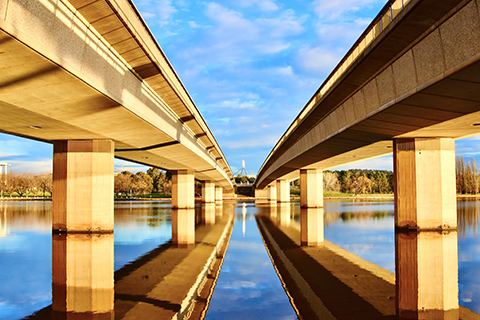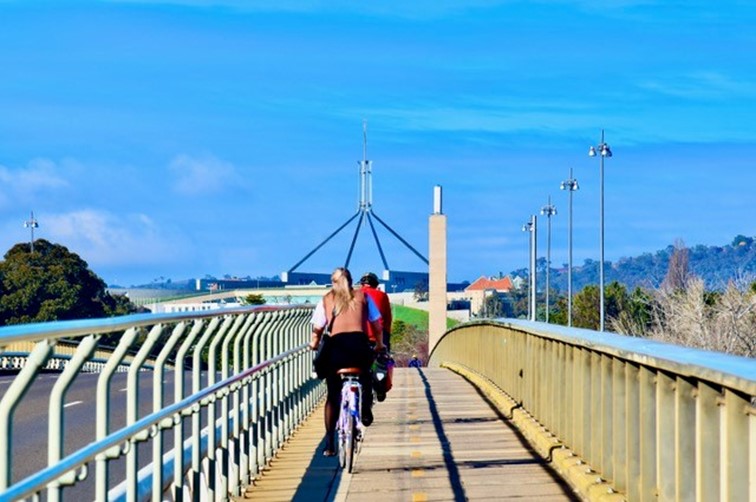History of the Bridge
Bridges of the past
Prior to the building of the Commonwealth Avenue Bridge, that we know today, three earlier bridges linked Canberra’s north and south at Commonwealth Avenue. The first of these earlier bridges was built in 1916, but suffered damage during floods in 1922. A second bridge replaced it in 1924, which employed a timber truss design. In the following year flood waters rose again resulting in the need to reinforce the bridge. A third bridge was then constructed in 1927 with added height.
As the city continued to develop calls came for a bridge which would better serve the growing population of Canberra and withstand the test of time.
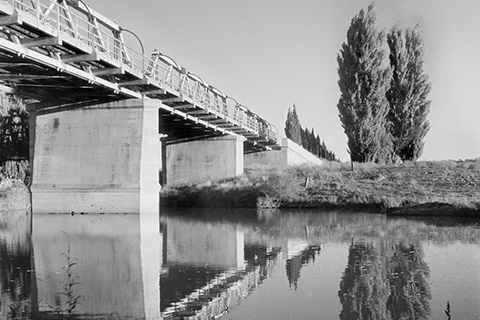
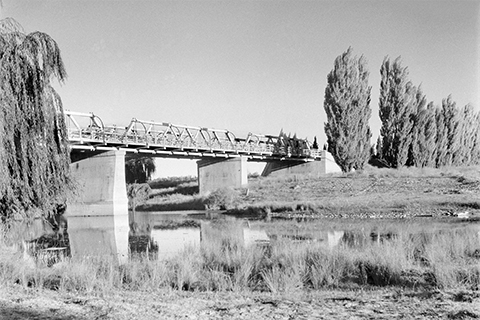
Image credit: NAA A1200, L7654 and NAA A1200, L7658
Construction
The brief for the design of the current bridge was submitted by the National Capital Development Commission in 1959. British firm, Maunsell and Partners were the successful tenderer for their original design of the 311 metre long bridge.
The design was refined to cope with the hot Australian conditions which caused greater moisture loss in the concrete structure than what was standard in British bridges.
To meet these demands, the Bridge was constructed using pre-stressed concrete, and reinforced with steel and epoxy resin.
At the time this was an innovative construction methodology, and upon its opening in 1963, the bridge was described as "the finest building in the National Capital" by Prime Minister Menzies.
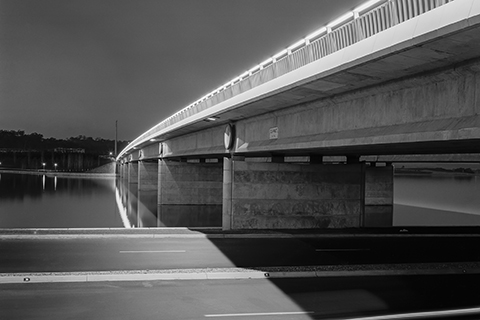

Image credit: NAA A7973 and NAA A1200, L47601
Connection to The Waterloo Bridge
Under the north and south abutments of Commonwealth Avenue Bridge are a pair of two-tonne historic stones from Waterloo Bridge in London.
Accompanying the stones is a bonze sign with the following inscription.
‘The Waterloo Bridge across the Thames in London was constructed in 1817 to the design of Sir John Rennie. The granite bridge had nine arches, each of 120’ span and was 2,456’ long, including approaches. This bridge was replaced with a modern reinforced concrete bridge in 1942.
Stones from the Waterloo Bridge were presented to Australia and other parts of the British world to become further historic links in the British Commonwealth of Nations’.
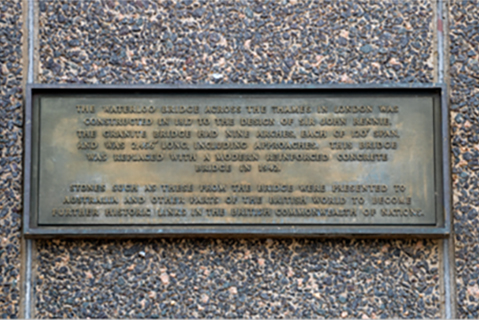
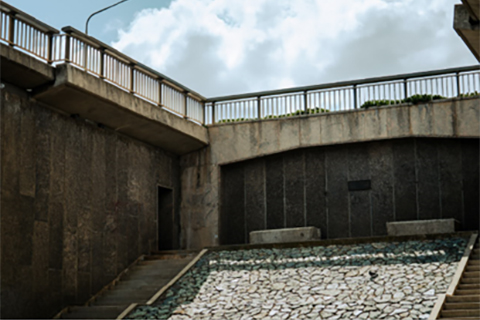
Image credit(s): Dom Northcott
Today’s bridge
Although Commonwealth Avenue Bridge is not individually heritage listed, it forms part of the wider heritage listing of Lake Burley Griffin as well as other listings within the Central National Area of Canberra. Commonwealth Avenue also forms one side of the National Triangle.
Each span of the bridge cleverly incorporates service pipelines into the superstructure to discreetly convey sewerage and water from one side of the lake to the other as well as other utilities. In fact, keen observers will note that the south-east decorative pylon is actually a vent.
Due to its remarkable engineering design the bridge has not undergone any significant maintenance works for sixty years. However, the time for these updates has come. Once the work is completed, the bridge will be strengthened to accommodate the increased weight of modern vehicles and provide better access for pedestrians and cyclists.
